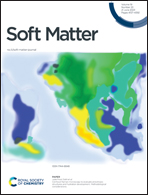Twist and measure: characterizing the effective radius of strings and bundles under twisting contraction
Abstract
We test the standard model for the length contraction of a bundle of strings under twist, and find deviation that is significantly greater than typically appreciated and that has a different nature at medium and large twist angles. By including volume conservation, we achieve better fits to data for single-, double-, and triple-stranded bundles of nylon monofilament as an ideal test case. This gives a well-defined procedure for extracting an effective twist radius that characterizes contraction behavior. While our approach accounts for the observed faster-than-expected contraction up to medium twist angles, we also find that the contraction is nevertheless slower than expected at large twist angles for both nylon monofilament bundles and several other string types. The size of this effect varies with the individual-string braid structure and with the number of strings in the bundle. We speculate that it may be related to elastic deformation within the material. However, our first modeling attempt does not fully capture the observed behavior.



 Please wait while we load your content...
Please wait while we load your content...